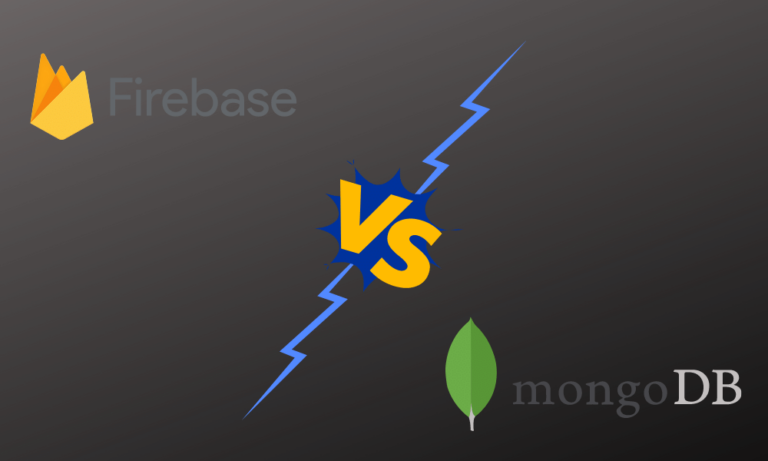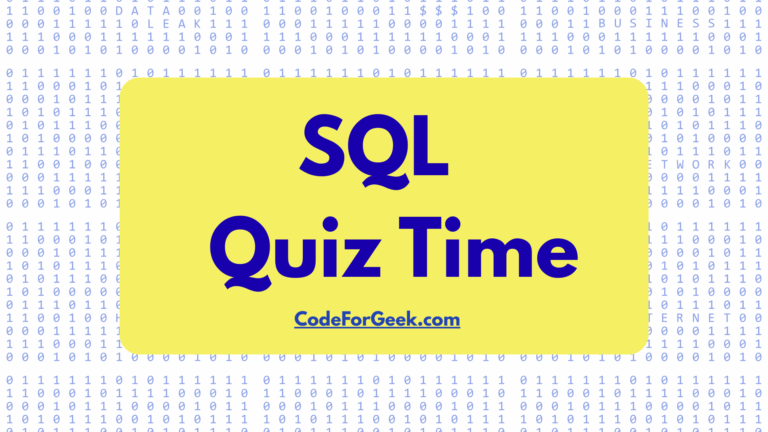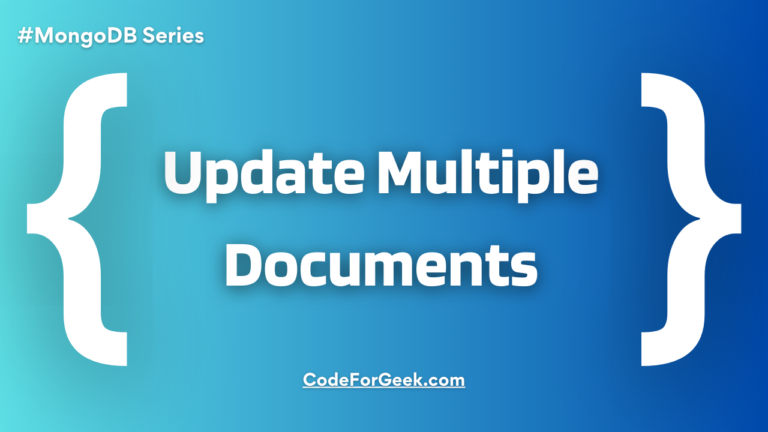Whenever we are developing an application, there is doubt in choosing the appropriate database. Picking either a SQL database or a NoSQL database is straightforward. If you want to store your data in the form of tables having relations to each other, you have to choose SQL, whereas NoSQL is best for semistructured or unstructured data, giving the ultimate flexibility to create your own schemas.
Suppose you go with a NoSQL database, which as a JavaScript Developer we usually do. Now there are also two popular NoSQL databases that you have to choose from, Firebase and MongoDB and this comparison are not easy since both have lots of similarities.
In this tuitorial, we will see what’s the difference between Firebase and MongoDB and understand which one to choose for what. So let’s get started.
Quick Overview of Database Types
Now that you are successfully through all that pep talk, it is time to understand what databases are in their real sense, really quickly.
Databases are centralized storage systems for application data that may be administered by an administrator. A database can have multiple users associated with it with different permissions.
Databases can be divided into SQL and NoSQL types. Both of these will be discussed in the following section. At the moment, we can just understand that SQL-type databases store data in tabular format, while NoSQL-type databases store data in tree-like formats. We are comparing Firebase and MongoDB databases because they are both NoSQL.
Users can also read, write, update, and delete data in a database, adding to its unique features. They must, however, have certain permissions to do so. In addition to data storage, database management services also provide many other services. Services like regular backups, access controls, partitioning, and security are just a few examples.
Type of Database
- SQL Database
- NoSQL Database
Let’s see each in short.
SQL Database for Storing Structured Data
An SQL database also known as a relational database stores data in tabular structures that allows storing of structured data. Think of it as an Excel spreadsheet. SQL databases can be used for both small-scale and large-scale application data storage. It is also considered easier to query data in SQL as compared to NoSQL.
Popular SQL Databases: MySQL, MariaDB, SQLite, PostgreSQL, OracleDB.
NoSQL Database for Storing Unstructured Data
A NoSQL database is also called a non-relational database that allows easier storage and management of unstructured data. NoSQL databases are perfect for real-time web applications, and huge data.
Popular NoSQL Databases: MongoDB, Firebase, Redis, Cassandra, Couchbase.
Quick Comparison of MongoDB vs Firebase
| MongoDB | Firebase |
| Made for web applications | Made for mobile applications |
| Open-source database platform | Commercial database platform |
| Server operating systems support is available | Hosted server for customers |
| Larger drivers support | Limited drivers support |
| Master-slave replication | No replication |
Difference between MongoDB vs Firebase
Firebase is a great platform for web and mobile development offering various services and tools for efficient app creation. These include a real-time database, cloud firestore, authentication, hosting, and push notifications. Firebase proves advantageous for apps requiring real-time collaboration and seamless data synchronization.
Whereas MongoDB stands as a widely utilized NoSQL database known for its flexible, scalable, and high performance. MongoDB adeptly manages substantial volumes of unstructured or semi-structured data by storing it in JSON-like documents. Its suitability lies in dynamic schemas, swift data retrieval, and flexible data modelling.
There a multiple set of factors that makes a comparison accurate. We will take into consideration quite a few ones to compare MongoDB vs Firebase to get a better understanding of what the two are good at and what at not.
MongoDB vs Firebase: Synopsis
MongoDB was founded in 2007 by Eliot Horowitz, Dwight Merriman, and Kevin Ryan. The company originally operated by the name 10gen which then changed to MongoDB Inc.
Firebase was acquired by Google Inc in 2014 and is now a flagship offer for application development by Google. It was originally founded in 2011 as an independent company.
MongoDB vs Firebase: Applications and Usage
The ultimate difference between MongoDB vs Firebase is that MongoDB is a document database used mainly for storing web application data in the form of documents, capable of handling complex data structures. It is the best database for large-scale applications.
On the flip side, Firebase is ideal for storing the data of mobile applications. It is best for small-scale applications providing features like real-time database, authentication, storage, hosting, and more.
While both MongoDB and Firebase offer solutions for mobile application database services and web applications database services respectively, they specialize in what they offer as mentioned above.
MongoDB vs Firebase: Database Accessibility
This aspect of the Firebase or MongoDB guide focuses on how both databases are distributed to users. MongoDB is an open-source database platform meaning it can be used by anyone.
On the other hand, Firebase is a commercial database platform meaning you need to pay a fee to be able to host your data on the database.
MongoDB vs Firebase: Supported Platforms
MongoDB offers its server on operating systems such as Windows, FreeBSD, Linux, OS X, and Solaris. Meanwhile, Firebase’s server is hosted which is only offered to its customers.
MongoDB vs Firebase: Programming Language Support
MongoDB supports multiple drivers and programming languages to use with. Some of them are NodeJS (JavaScript), Python, Scala, PHP, Perl, C, Java, R, Ruby, C++, and many more.
Firebase is mainly focused on mobile applications that support a selective number of programming languages such as Objective C, Java, and JavaScript.
MongoDB vs Firebase: Replication
MongoDB comes with master-slave replication support meaning you can replicate your data from one database server (master) to other database servers (slaves). This facilitates load-balancing or failover of the servers.
Firebase, on the other hand, does not support any replication methods for databases.
MongoDB vs Firebase: Additional Services
With the MongoDB database, we can use MongoDB Atlas which is the best tool for managing MongoDB cloud databases. It can be a great option for developers who want to use MongoDB capabilities without the hassle of managing a large infrastructure. You can consider it as a highly capable database management system.
Firebase doesn’t provide any service like this for managing and scaling databases.
MongoDB vs Firebase: Database Security
MongoDB’s security features are highly regarded and widely used. It offers multiple options for data security and customizable flexibility. Its security model allows fine-grained access control.
Firebase security features are simple and usable without compromising on robust security measures. Its authentication service supports a variety of methods including social media login and multi-factor authentication.
Look, in terms of security comparing Firebase vs MongoDB is inappropriate as every organization is aware of it, they want their server to be highly secure so we can’t logically compare. But if you want personal suggestions as a developer, we support MongoDB in terms of security.
Also Read: How to Set Up an Angular Application on Firebase
Conclusion
MongoDB is a document-based data model that gives flexible and dynamic schema designs while Google Firebase is a realtime database best for mobile app development on both iOS and Android platforms, in addition to web applications.
You can use Firebase when you need a development platform with real-time data synchronization capabilities or when developing a Mobile app while using MongoDB is best for applications that require flexible data modelling, high scalability and handling of large datasets.
Read More: Aerospike vs MongoDB
Reference
https://www.mongodb.com/firebase-vs-mongodb





